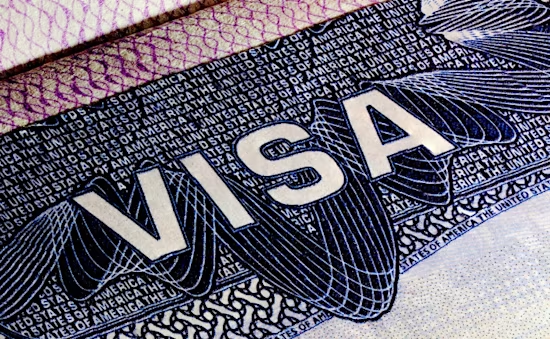What is the H1B to Green Card Process?
Home » Guide to Green Cards From a Green Card Lawyer » H1B to Green Card Process

The H-1B visa is a very popular work visa that allows for “dual intent.” Very few temporary visas allow nonimmigrants to remain in their status while taking steps towards getting a green card. When they do, they benefit from the dual intent doctrine.
Most nonimmigrant visa classifications require that their holder has a residence abroad that they don’t intend to abandon. That means, when applying for a nonimmigrant visa, typically, you can’t plan to use it to immigrate permanently to the United States.
Unlike most temporary nonimmigrant visa categories, the H-1B visa contains no legal requirement to prove that the applicant has a home in another country that they plan to return to. You are free to come to the U.S. on a temporary H-1B work visa and then either return home when it expires or seek a green card.
Another benefit of the H-1B visa is that if you’re the beneficiary of a pending immigrant visa, it’s still possible to travel outside of the U.S. and reenter. If this is in your plans, discuss how this works with your attorney.
If you would like to pursue a green card while in the United States, you must first do two things:
- Consult with an experienced immigration attorney as soon as possible
- Apply for a green card –with your attorney- before your work visa expires
Table of Contents
Request A Consultation
Meet The Attorney
Angela D. Warren
With more than 20 years of immigration and business immigration experience, Angela Warren has helped hundreds of individuals, families and businesses.
Get The Immigration Help You Deserve
What is the H-1B Work Visa?
The H1-B nonimmigrant visa is a temporary work visa that generally has a maximum cumulative duration of 6 years.
The initial stay is typically three years, but extensions of up to another three years are available.
These visas are reserved for workers in an occupation that requires specialized knowledge.
Typically, that means a bachelor’s degree in a specific specialty.
Examples of H1-B qualifying specialty occupations include:

- Engineers
- Architects
- Graphic Designers
- Professors
- Nurses and doctors
- Dentists
- IT professionals
- Psychologists
- Scientific researchers
- Public relations specialists
- And more.
Many occupations may qualify you for an H1-B nonimmigrant visa, but the catch is, you must have a job offer from a U.S. company to qualify. Your employer must file a petition with U.S. Citizenship and Immigration Services (USCIS) on your behalf, pay fees, and follow all requirements.
Get The Immigration Help You Deserve
After Arriving in the United Stated on an H1-B Visa
If you’re interested in learning more about transitioning from an H1-B work visa to a green card, you are likely already in the United States.
It’s important to consult with an experienced attorney when applying for an immigrant visa.
Most H1-B visa holders will use an employment-based immigrant visa to gain lawful permanent residence.

Changing from an H1-B visa to an Employment-Based Green Card
There are five types of employment-based immigrant visa petitions that can lead to a green card.
- EB-1 immigrant visa for skilled foreign workers with a qualified extraordinary ability
- EB-2 immigrant visa for skilled foreign workers with an advanced degree or with a qualified exceptional ability in their field
- EB-3 immigrant visa for skilled foreign workers, professionals, or certain other workers
- EB-4 immigrant visa for workers in certain special fields
- EB-5 immigrant visa for qualified investors who make the required investment in a U.S. business
Employer-Sponsored Green Cards
You will usually need to find a U.S. employer willing to offer you a permanent job, follow through with Department of Labor (DOL) expectations, and file a petition for your immigrant visa to U.S. Citizenship and Immigration Services (USCIS). Most workers will require the sponsorship of a U.S. employer.
Self-Petitioning for Employment-Based Green Card
Only a few employment-based visa categories allow for self-petitioning. As a self-petitioner, you would still use an attorney, the self-petitioning means that you don’t need an employer to petition on your behalf.
The categories of visas that allow for self-petitioning are:
- EB-1 visas
- EB-2 visas with a National Interest Waiver (NIW)
- EB-5 visas
Changing from an H1-B Visa to a Family-Based Green Card
Some H1-B work visa holders originally plan to return to their home abroad but end up meeting the person they want to marry while in the states. In that situation, a family-based immigrant visa through your spouse may be another way to get your green card.
Family-based visa petitions become available to H1-B visa holders if they marry either a U.S. citizen or a lawful permanent resident. To apply for a green card based on marriage, your spouse will need to file a petition for your immigrant visa with USCIS on your behalf.
In some ways, a family-based green card is an easier pathway to becoming a lawful permanent resident. On the other hand, immigration officials are aware that marriages are can be entered transactionally so that the foreign national can gain a green card. If your immigrant visa petition eligibility comes through marriage, you must be prepared to prove that you are in a bona fide marriage. Your immigration attorney can help make sure you have enough evidence to support the authenticity of your marriage.
Get The Immigration Help You Deserve
Waiting on Your Immigrant Visa Approval
While you wait on your immigrant visa approval, you may need to apply for an extension on your H-1B visa.
USCIS will usually approve your H-1B extension past the six-year maximum under one of the following conditions:
- A year has passed since any application for labor certification used to support your employment-based immigrant visa petition
- A year has passed since filing your employment-based visa petition
- Your visa petition is approved, but an immigrant visa number isn’t available to you yet
If your H-1B visa expires before your green card is approved and you need to continue working, you must apply for a work permit.
Your attorney can help you. Your attorney will also recommend the best time to get a medical exam and get caught up on vaccinations. At some point in the waiting process, USCIS will send you an appointment for your interview.
While waiting on your visa approval, it’s very important to follow all the rules on your existing visa, stay out of trouble, and make as few changes as possible. If you move, you must immediately inform USCIS of your new address not only so you receive timely communications, but also because it’s the law.
Once your visa petition is approved and a visa becomes available to you, your lawyer can help you adjust your status to lawful permanent resident, and you will receive your green card.
Schedule an H1B to Green Card Free Consultation
Warren Law Firm has a proven track record of success in immigration law including H-1B work visas with dual intent, employment-based immigrant visas, and marriage visas. If you want an attorney you can trust to represent you through your entire immigration journey, schedule a free consultation today.
